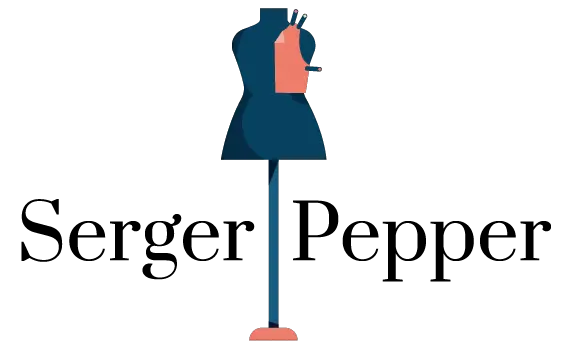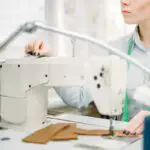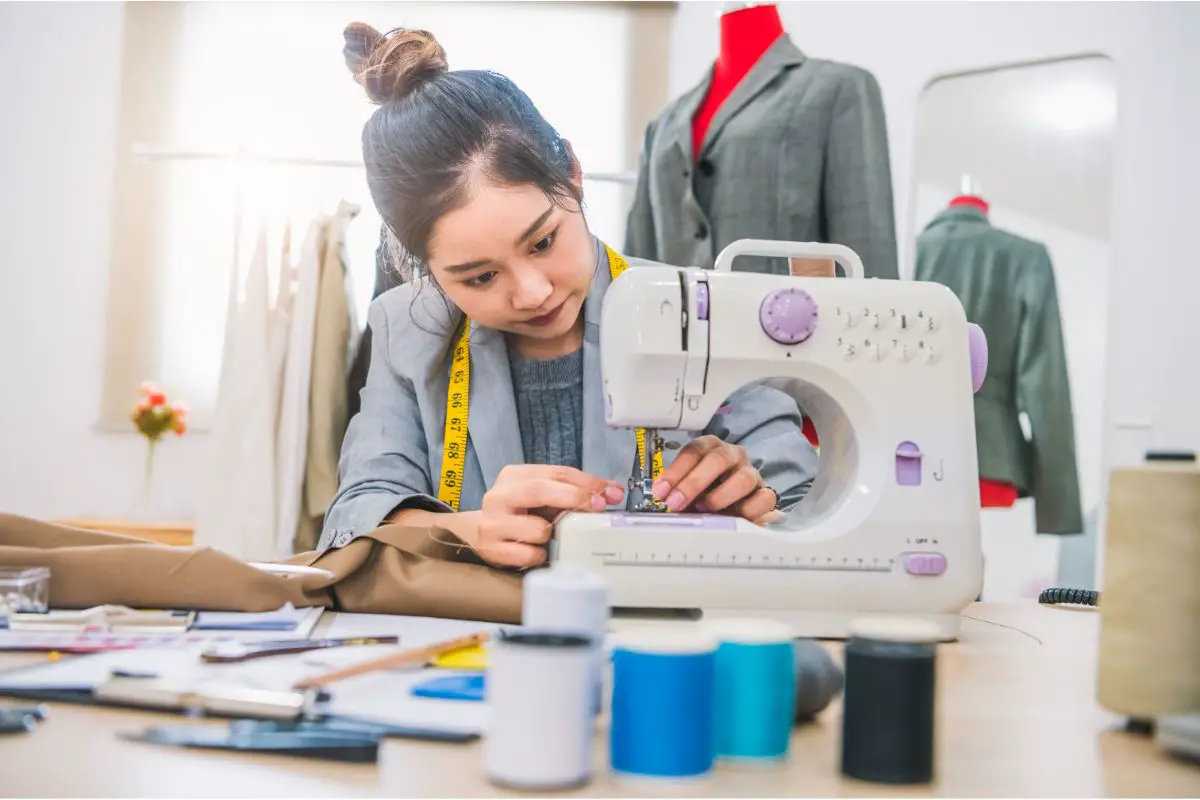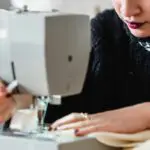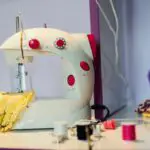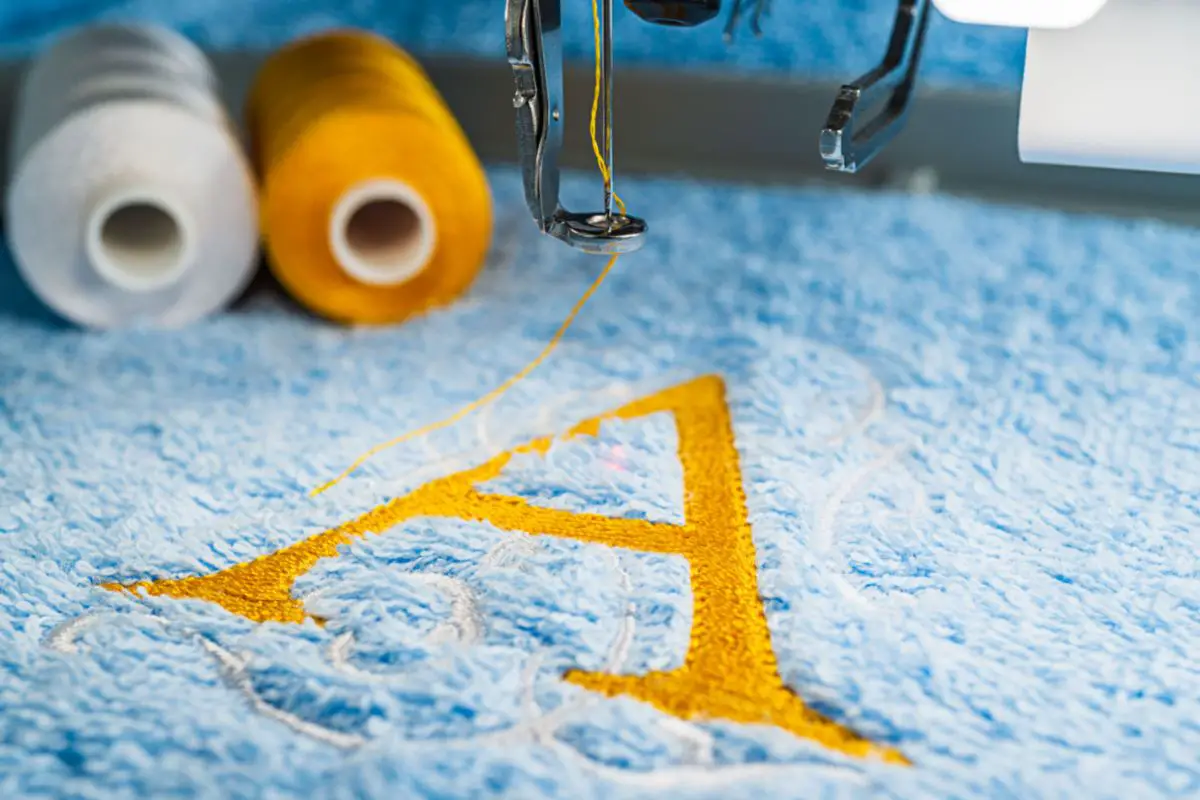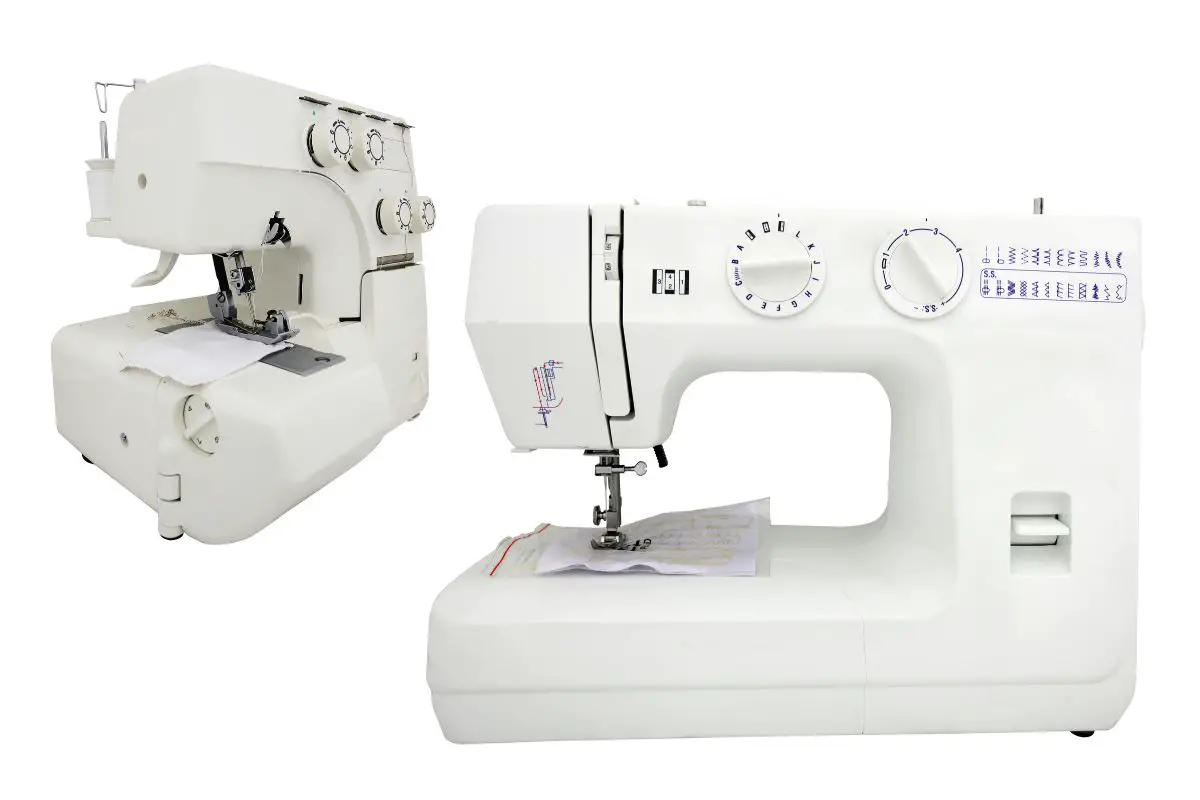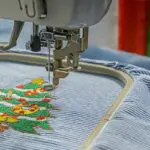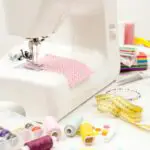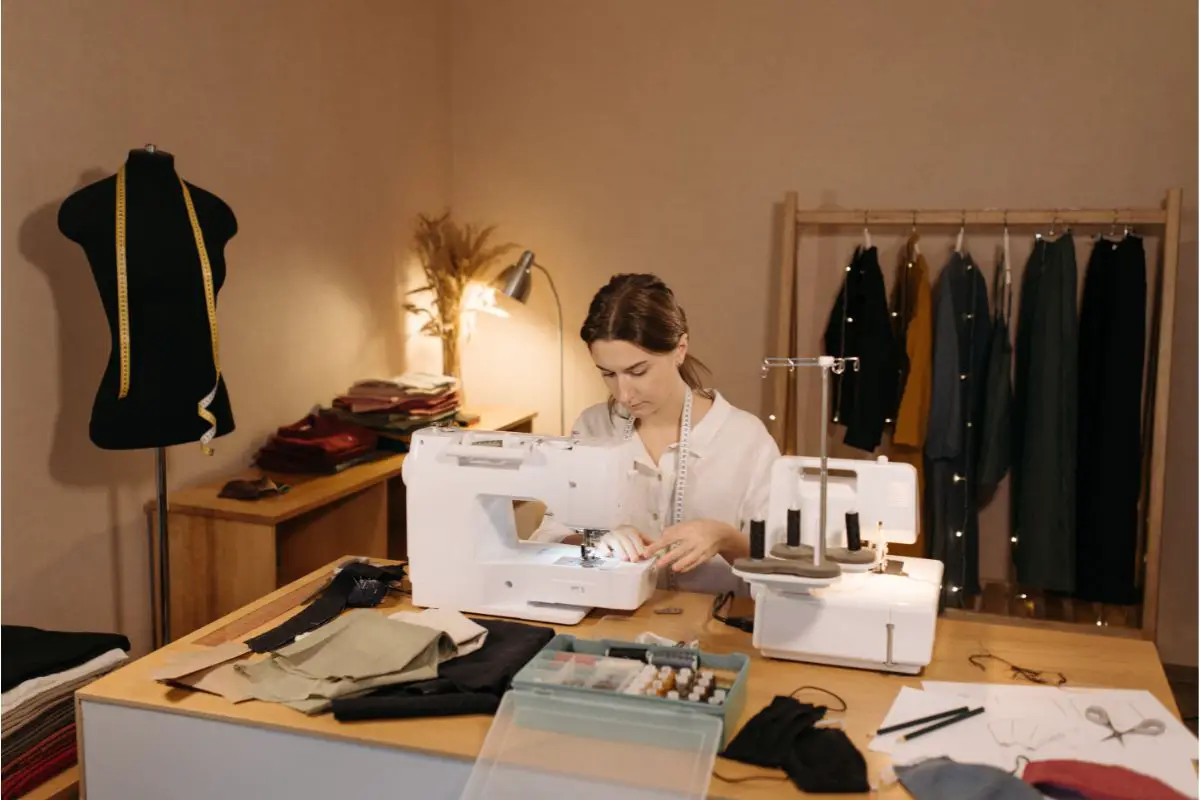Sewing machines may seem like somewhat complex pieces of machinery, especially if you’re beginning your sewing journey.
It can become overwhelming with tons of gears and compartments to understand and use.
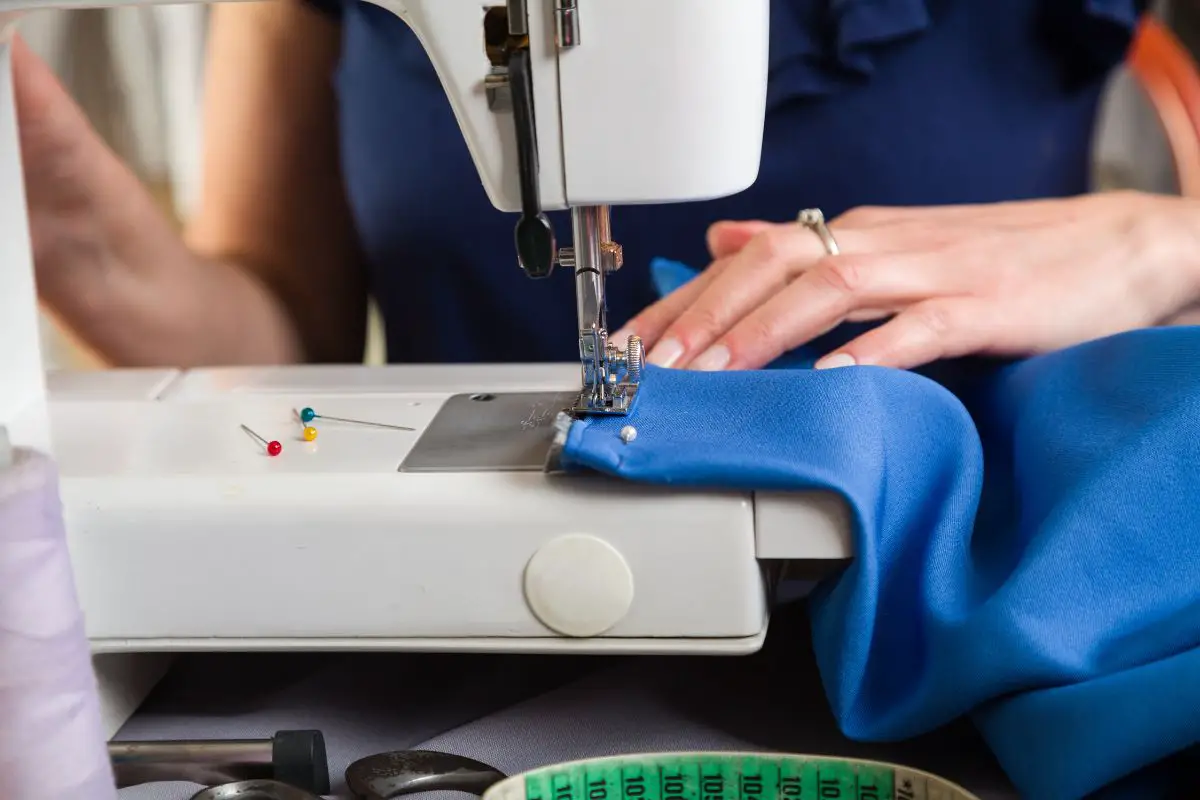
However, that said, once you understand the basics of a sewing machine, you’ll be stitching with ease in no time. With the help of this guide, everything is sure to become clear.
With this in mind, this article will go over everything you need to know about how a sewing machine works and the mechanisms behind it that help power the machine.
Let’s get straight into it!
Different Types Of Sewing Machines
There are four different types of sewing machines when looking at operations.
These include mechanical sewing machines, manual sewing machines, computerized sewing machines, and electronic sewing machines.
Below, we will have a look at each machine in further detail.
- Mechanical sewing machine – This is the most popular type of sewing machine. Here you can adjust dials and knobs to influence the stitch tension and length. These machines typically consist of various stitch styles, including utility stitches, buttonhole stitching, and even decorative stitches. Most people will have seen or used a mechanical sewing machine. The best part? They are super simple to operate.
- Manual sewing machine – This type of sewing machine is typically operated using a treadle. These machines can be found nowadays in the vintage category and are typically fitted with an electric motor to ensure that the old-fashioned flair is still present while having the speed and efficiency of modern times. Without a motor, operating a manual sewing machine can be physically taxing.
- Computerized sewing machine – If you’re looking for a machine that contains everything you could ever need, then you’ll love the computerized sewing machine’s model. Here, the machine can memorize operations, download patterns, provide precise stitching, and perfectly synchronize needle functions and speed. Various sewing operations can be performed without having to worry about changing threads or modifying anything. Plus, there are even USB ports and touchscreen configurations that can create embroidery designs and sewing patterns. Therefore, with a computerized sewing machine; most of the work is done for you. Thus, with smooth operations, sewing becomes all the more joyous. That said, you can’t forget about the hefty price tag it comes with, either.
- Electronic sewing machine – These kinds of sewing machines are similar to mechanical sewing machines, however, these are more automated with simple buttons and maybe LCD screens, too. When it comes to stitching widths and lengths, these machines can be used to set them automatically. Moreover, they have convenient features, including various overlock stitching options and an automatic one-step buttonhole stitch.
The Basic Principles Of A Sewing Machine
When it comes to understanding how a sewing machine works; there are four main mechanisms. Below, we will take a further look into each.
1. The Needle Mechanism
The main function of the needle mechanism is to raise and lower the needle which is controlled by the take-up lever.
Fundamentally, the mechanism here is controlled by two wheels that are connected to the crankshaft – which is attached to both the needle clamp and needle.
Then, the crank is used to translate the motor’s rotary motion into the corresponding needle motion.
2. The Shuttle And Bobbin Mechanism
One of the most important mechanisms on a sewing machine is the bobbin and shuttle mechanism.
Without a hook and shuttle, you won’t be able to achieve stitches. To power these components, gears are rotated faster than the needle itself.
3. The Feed Dog Mechanism
As its name suggests, the feed dog mechanism essentially just feeds the fabric between the throat plate and the presser foot.
Here, the mechanism is important for ensuring that the fabric is distributed evenly.
It works by feeding the fabric forwards and upwards at the same time which is achieved by two interlinked mechanisms powered by the main shaft.
This is achieved by an egg-shaped wheel that moves the lever back and forth and pulls the feed dog from right to left at the same time.
Then, a second crank is used to move the feed dog up and down.
These work together to ensure the fabric comes out smooth.
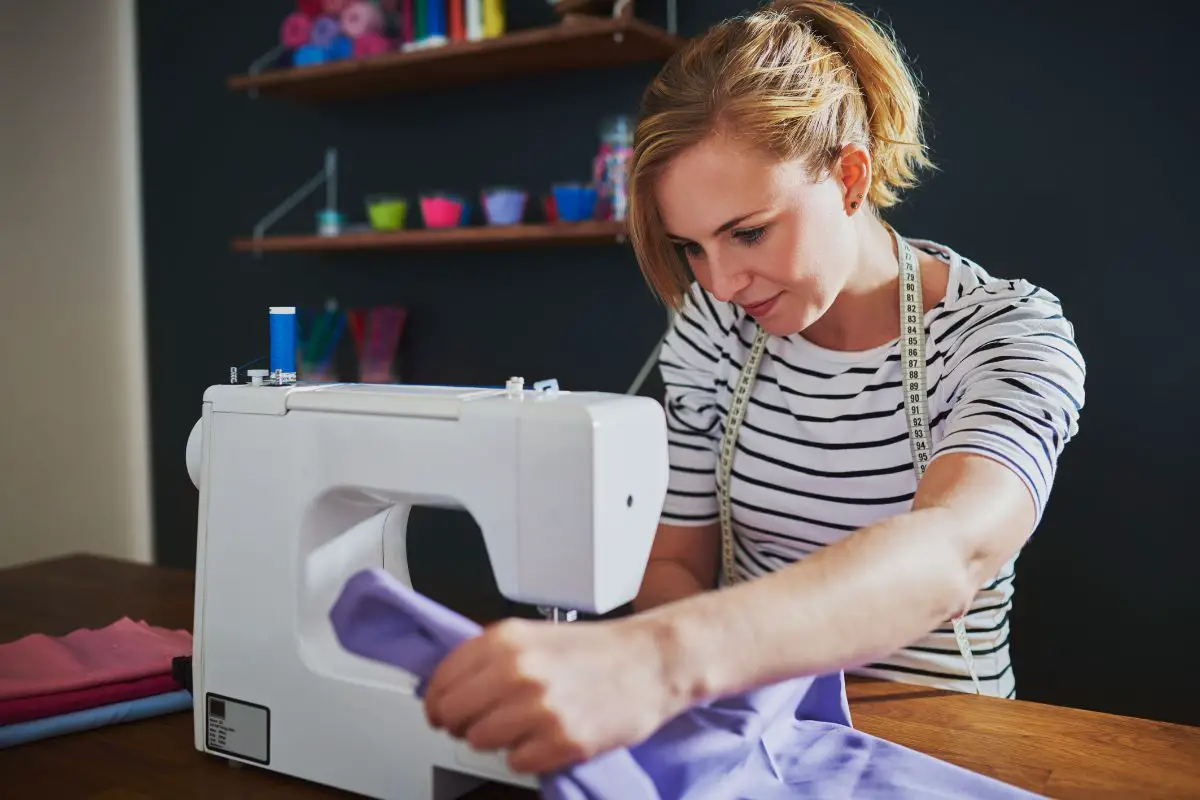
4. The Stitch Mechanism
So far, we have outlined the most important mechanisms that ensure the machine runs smoothly. However, how are the stitches actually made?
Well, on the sewing machine, a top thread is taken from the spool and then passed through the needle’s eye. Then, the bottom thread is fed through the bobbin.
Once the thread is in place, the needle starts off high and moves fast and hard to pierce the fabric.
To form the next stitch, the needle pushes the thread through the material. To ensure not too much thread is pulled at once, the correct tension must be set.
Once the needle punctures the material, it takes the top thread with it.
Then, the second bottom thread – which is located in the bobbin – is connected by the rotating bobbin which features a hook on the end.
As the bobbin rotates, the hook catches onto the top thread and forms the stitch.
This is the result of the needle rising which causes the bobbin to drag the top thread around and locks the bobbin thread in place.
Once the needle pulls up, the thread is tightened – creating a tight stitch. This process is repeated until you have completed the stitch.
Final Thoughts
One of the fastest and most effective ways of sewing is by using a sewing machine.
However, when it comes to understanding how they work, it can be somewhat overwhelming – especially for beginners.
However, with the help of this guide, working your way through your sewing machine should be a breeze.
Hopefully, this article has informed you about how a sewing machine works (see also “Step-By-Step Guide To Threading A Brother Sewing Machine“).
- How To Sew Fabrics Together - June 5, 2023
- How Many Stitches Per Inch? - June 5, 2023
- How Long Does It Take To Sew A Dress? - June 5, 2023
